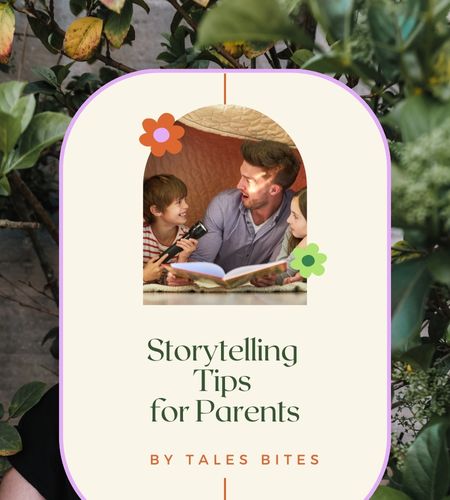As a parent, I have observed firsthand the transformative power of storytelling in a child’s life. Storytelling is more than just a means to entertain or pacify children; it’s a profound educational tool that enhances their cognitive, social, and emotional development.
When we narrate stories to our children, we’re doing more than just sparking their imaginations. We’re helping them develop language skills, enhance their listening abilities, and expand their understanding of the world. A well-told story can introduce new vocabulary, ideas, cultures, and moral values.
Furthermore, storytelling strengthens the bond between the storyteller (usually the parent) and the listener (the child). It’s a shared experience that fosters connection, understanding, and trust. This intimate ritual can become a cornerstone of their childhood, a cherished memory that they carry into adulthood. So, let’s delve into how to enrich this storytelling experience for your child.
Understanding Your Audience
As a parent, the first step in effective storytelling is truly understanding your child – their age, interests, attention span, and comprehension level. Each of these factors significantly influences how you tell your stories and the types of stories you choose.
For example, younger children, typically under the age of 5, may have shorter attention spans, so shorter stories with bright, engaging visuals could be more effective. As children grow older, their attention span increases, and they begin to appreciate more complex narratives.
Similarly, children’s interests play a vital role in storytelling. Knowing what fascinates your child, be it dinosaurs, superheroes, or fairy tales, can make your stories more engaging for them. Remember, the goal isn’t just to tell a story; it’s to captivate their imagination, ignite curiosity, and foster a love for stories.
By understanding your child’s unique mind and preferences, you can tailor your storytelling approach to create an enriching and enjoyable experience for both of you.
Tips for Effective Storytelling

Voice Modulation
Voice modulation is a critical element of storytelling. Changing your tone, pitch, and volume can bring your story to life and keep your child engaged. Try whispering during suspenseful moments and raising your voice during exciting scenes. Practice reading aloud and experiment with different vocal inflections to differentiate characters. It’s not about being a professional voice actor, but rather about making the story dynamic and interesting for your little listener.
Engaging Expressions
Storytelling is performance art. Your facial expressions and body language can greatly enhance the story. When a character is surprised, show surprise on your face. If a character is sneaking around, mimic that action. This not only makes the story more engaging but also helps children understand emotions and actions better. Remember, your child is looking at you as much as they’re listening to you, so let your face and body tell the story, too.
Creating Suspense
Creating suspense is the art of making your child eager to know what happens next. It’s about the unexpected twists, the mysteries, the dramatic pauses. You could lower your voice, slow down your pace, and pause at crucial moments to build suspense. Don’t rush through the story; allow tension to build. This not only keeps your child engaged but also encourages them to think and predict, fostering their problem-solving skills.
Interactive Storytelling
Interactive storytelling is about making your child an active participant in the story. Ask them what they think will happen next or let them choose between different paths in the story. Use props, if available, to make the story tangible. You could even encourage them to play a character. This not only enriches the storytelling experience but also develops their imagination, creativity, and decision-making skills. Remember, the aim is to create an immersive experience where the story is not just told but lived.
Choosing the Right Stories
Understanding your child’s unique personality, interests, and developmental stage is the cornerstone to selecting the perfect stories that will ignite their imagination and enhance their love for reading.
When considering age appropriateness, remember that it’s not just about the complexity of the words used but also the themes and issues addressed in the story. For very young children, stories with simple, clear plots and repetitive language can help them follow along and learn new words. Picture books often work well for this age group, using vibrant illustrations to tell a story and engage young minds.
As your child grows and their understanding of the world deepens, you can introduce more complex narratives that challenge their thinking and fuel their curiosity. Don’t shy away from stories that touch on different emotions or present difficult situations. These can be valuable for initiating conversations about feelings, empathy, and problem-solving.
Remember, the aim isn’t to merely entertain but also to educate and foster a lifelong love of reading. Keep an open dialogue with your child about their reading preferences as these will change over time. Their inputs can be your best guide in choosing stories that captivate their interest and expand their worldview.
Finally, choosing diverse and inclusive stories is crucial. Reading stories about different cultures, experiences, and perspectives can help your child develop an understanding and appreciation for the rich tapestry of human life. A diverse library can lay a strong foundation for empathy, compassion, and open-mindedness.
Fostering a Regular Storytelling Habit

Creating consistency in storytelling is incredibly crucial. Just as with other routines, consistency in storytelling can help children feel secure and provide structure to their day. It stimulates anticipation and can be an integral part of their daily routine, like brushing their teeth or bedtime rituals.
In storytelling, consistency doesn’t mean repeating the same story verbatim every day. Instead, it encourages a regular pattern or schedule of storytelling that your child can look forward to. It’s about creating an enriching environment where the magic of stories is a daily delight, not a sporadic treat.
Storytelling doesn’t have to be an elaborate event – it can effortlessly weave into your day-to-day activities. Share a story over breakfast, during a car ride, or as part of the bedtime routine. Even chores can turn into storytelling sessions: while folding laundry, you might narrate the adventure of the sock who lost its pair.
Alternatively, dedicate a specific “story hour” each day. This could be after dinner or before bed, making it a routine both you and your child anticipate with joy. This regularity not only aids in their emotional development but also fosters a deep love for stories and a lifelong passion for reading.
Remember, your child values the time you spend with them far more than the perfect execution of a story. So, be patient with yourself, find joy in the process, and watch as storytelling becomes a cherished part of your family’s daily life.
Final Thoughts
As we’ve explored, storytelling is more than just a bedtime routine – it’s a chance to connect, educate, and spark imagination in our children. From practicing voice modulation to creating suspense and fostering interactive elements, there are many ways to bring stories to life.
Remember, there’s no ‘one-size-fits-all’ approach to storytelling. Each child is unique, and as parents, our storytelling styles should be just as individual. So, experiment, be expressive, and most importantly, enjoy the process.
Storytelling should be as enjoyable for you as it is enchanting for them. Let’s embrace the magic of storytelling together.
Subscribe to our email newsletter to get the latest posts delivered right to your email.



Comments